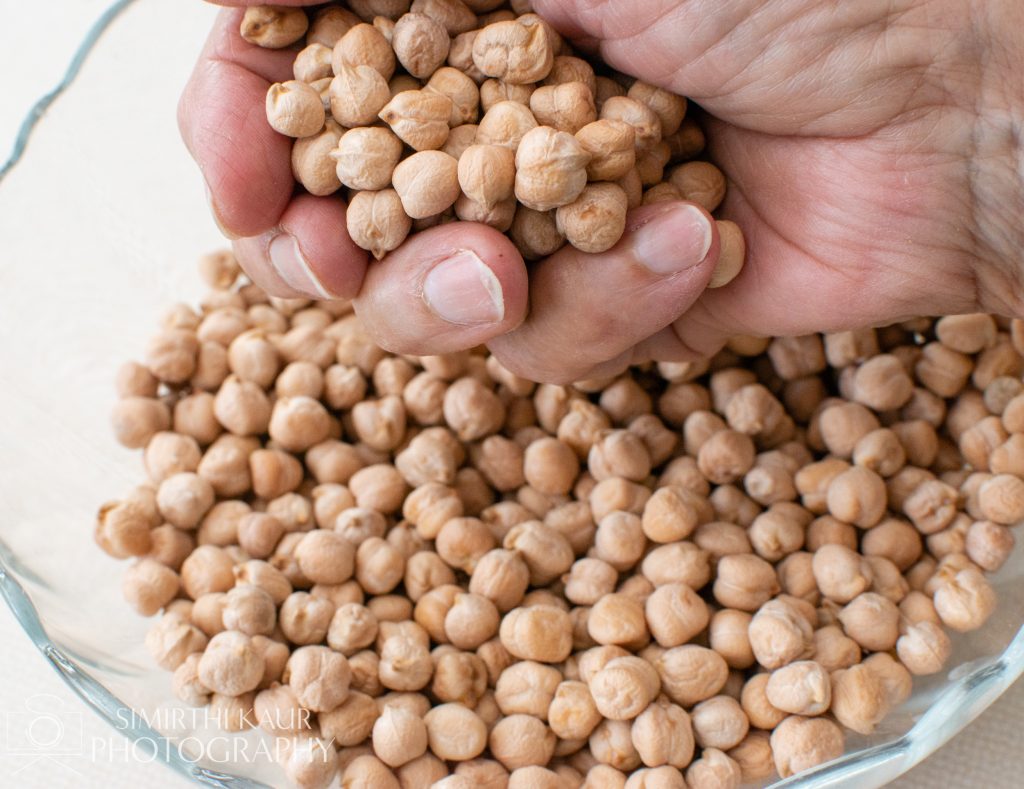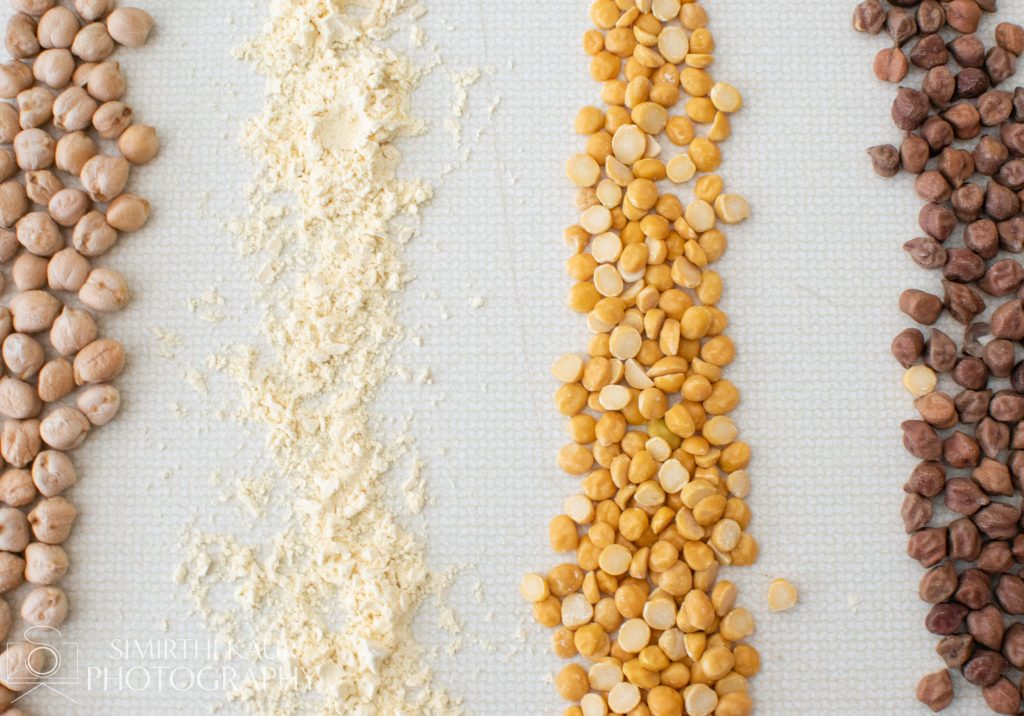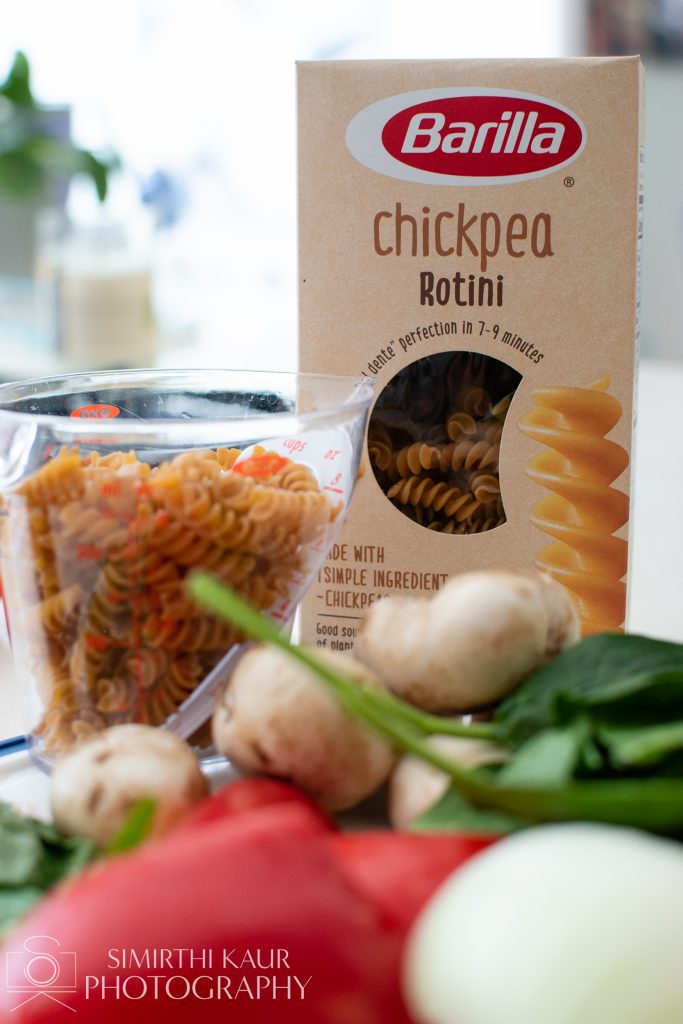A CHICKPEAk into Healthy Options
The first thought that pops into our mind when thinking of protein tends to be some sort of meat. However, at times when meat is not an option or not available or for vegetarians there are other sources of protein out there. In this article, we will go over the nutritional facts of chickpeas, and how incorporating them into one’s diet can benefit you.
What are chickpeas?

Chickpeas, also known as Garbanzo Beans, Bengal gram, or Chana, are a legume that is typically round and beige in color but can also come in yellow, red, dark green, and black. They are rich in protein and fiber along with many other vitamins and minerals including iron, vitamin B-6, magnesium, and calcium.
Benefits
Chickpeas have many benefits. They are a high source of protein which is beneficial to anyone who wants to increase their protein intake in their vegetarian or non-vegetarian diet. For every one cup of uncooked chickpeas, there are 14.53 grams. Protein is necessary for bone, muscle, and skin health and can even help prevent several medical conditions including osteoporosis, hyperlipidemia, and diabetes.
Osteoporosis is a bone disease where there is very little or no bone production and as a result, bones become weak and fragile. High levels of protein from chickpeas can help prevent osteoporosis.
Because chickpeas do not contain high saturated fats, it will not cause an increase in cholesterol, unlike meat. For patients that have hyperlipidemia and need to be mindful of their cholesterol levels chickpeas can help with that. The fiber in chickpeas also decreases the risk of heart disease which is directly connected to high levels of cholesterol.
Finally, chickpeas can also play a role in reducing inflammation in both Type 1 and Type 2 Diabetes (click here to read more). Type 1 diabetes is an autoimmune disease that is characterized by chronic inflammation (Clark et al.) In a study done in 2014 to understand the fiber intake and inflammation of people with type 1 diabetes, it concluded that individuals with type 1 diabetes should increase their dietary fiber consumption to greater than 30 grams per day to help reduce inflammation (Bernaud et al.). Studies have shown that there is a link between obesity and chronic low- levels of inflammation (Wellen et al.). Type 2 Diabetes is a metabolic condition that triggers an inflammatory response in obesity. In 2018, a review in the Journal of Chiropractic Medicine found that consuming high amounts of dietary fiber can prevent the development of type 2 diabetes (McRae et al.). Eating chickpeas, with their high dietary fiber, can help reduce the levels of inflammation.
Nutritional Facts
According to the USDA and using the Nutritionix food database, the nutrition facts are as follows for 100 grams of grilled chicken, chickpeas, and beef.
| Grilled Chicken | Chickpeas | Beef |
| Key facts Calories: 148.3 Protein: 29.4 g Cholesterol: 105.9 mg Total Fat: 3.4 g Total Carbs: 0 g | Key Facts Calories: 164.1 Protein: 9.2 g Cholesterol: 0 mg Total Fat: 2.6 g Total Carbs: 27.4 g | Key Facts Calories: 290.6 Protein: 25.9 g Cholesterol: 187.1 mg Total Fat: 20 g Total Carbs: 0 g |
- 100 grams of chicken and beef is approximately equivalent to 3.53 ounces
- 100 grams of chickpeas is equivalent to 4.88 ounces.
This comparison, along with calorie intake tells us that chickpeas are more beneficial to have than chicken or beef when maintaining a healthy lifestyle.
Where can you find them?
Chickpeas can be found at most local or ethnic grocery stores either canned, dried or even found as chickpea flour.

In order to prepare dried chickpeas there are three steps:
- Sort and wash to remove any dirt or rocks
- Soak chickpeas overnight which will help break down substances that can cause gastrointestinal discomfort
- After rinsing and draining chickpeas cook and simmer them for 2 hours until they are tender
Tips and Tricks
- You can also use a pressure cooker such as an Instapot to reduce the number of hours soaking
- Using a pressure cooker chickpeas can even be ready to eat within 1-2 hours
- Canned chickpeas are pre-cooked and can be eaten right away. A quick tip would be to rinse the water they come in to remove any excess sodium.
- My favorite way of eating these are by adding them to my salads
- Chickpea Flour is a great alternative to wheat or all-purpose flour. Many grocery stores even carry chickpea flour pasta and tortillas for those who follow a gluten-free diet. Chickpea pasta recipe.

Are you going to add chickpeas to your diet?
Chickpeas of all sizes and colors are beneficial food to add to your diet. They are rich in proteins, fiber, vitamins, and minerals. They also have many benefits, especially for those who have issues with low protein, high cholesterol, and inflammation. Whether the chickpeas are in a curry or just eaten plain, there are so many ways to enjoy them.
*Make sure to check with your primary care physician to incorporate chickpeas in the best way possible for you*
Photo courtesy (or used with permission from): Simirthi Kaur Photography, Nutritionix
Author & © Simirthi Kaur Singh, 2021 Pre-med student intern
San Mateo Primary Care and Apollo Health Care Center